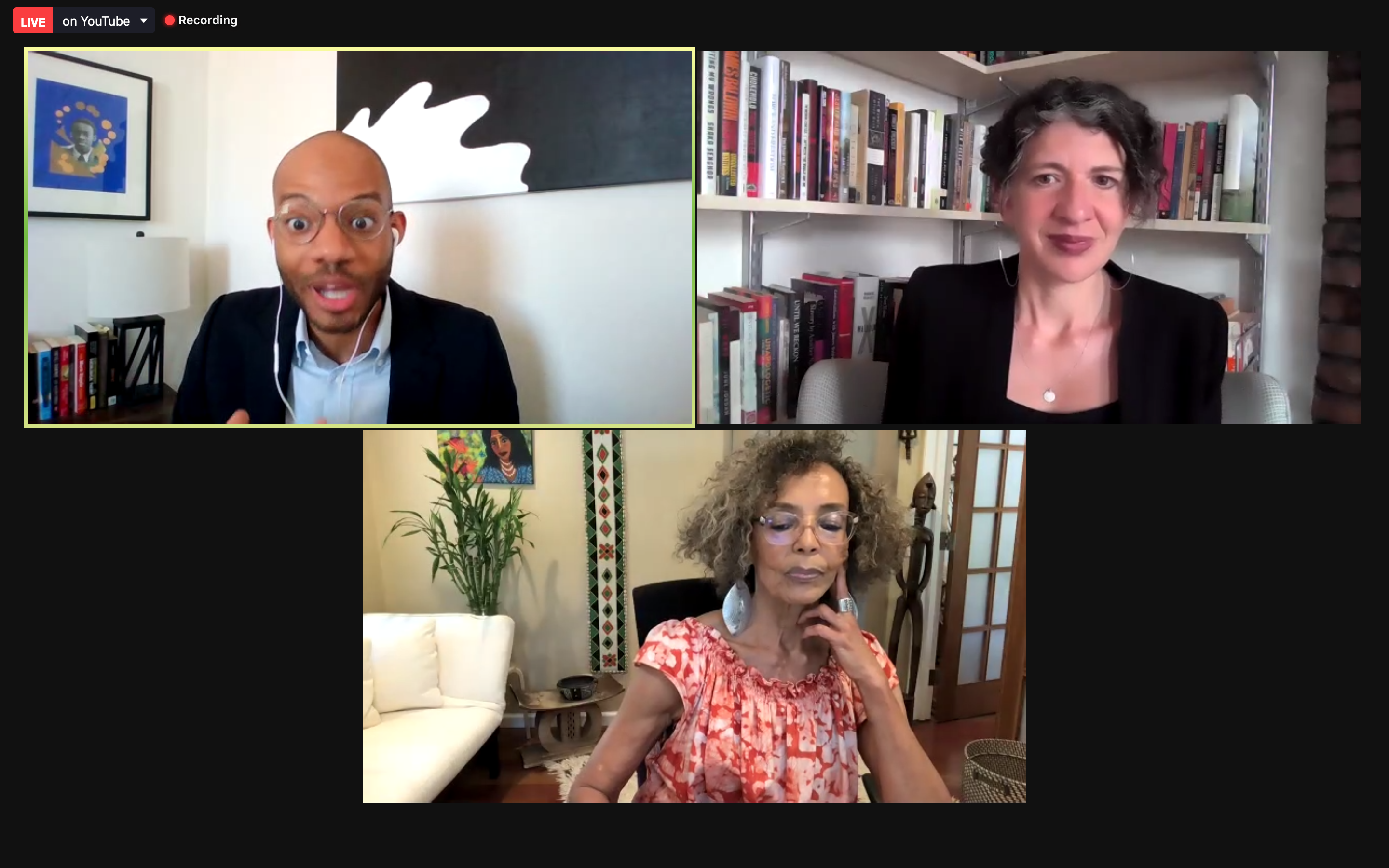Community activists highlighted the importance of accountability and survivor-centered solutions in bolstering restorative justice at a conversational event co-sponsored by the Center for Comparative Studies in Race & Ethnicity, the Stanford Arts Institute, the Stanford Criminal Justice Center and the Stanford Faculty Women’s Forum.
This event was part of an Imagining Justice series intended to integrate scholarship and public engagement into research and conversations centered around criminal justice and race studies.
Founder and director of the nonprofit racial equity organization Common Justice Danielle Sered shared her work on violence intervention through her organization’s alternative-to-incarceration and victim-service program. This program, which allows offenders to avoid a prison sentence or criminal charges if the victim is open to the process, requires that offenders take courses with a curriculum that “invites people to think about violence,” Sered said.
Sered pointed out that survivor-centered solutions are crucial when addressing issues of restorative justice. She said that society is often dishonest about the demographics of victims and does not take into account what victims would like to see out of criminal justice systems. Sered further explained that survivors of violence often live in fear of harmful actions being repeated and that the criminal justice system fails to promote a sense of safety.
“If incarceration produced safety, we would be the safest country ever to have existed,” Sered said. “And the Black and Brown neighborhoods where enforcement is highly concentrated would be these Edenic havens.”
Sered also called attention to the importance of accountability when considering responses to violence. She made a distinction between accountability and punishment, highlighting how punishment tends to be a more passive process that does not enable people to acknowledge the impacts of their actions. Accountability, on the other hand, allows individuals to transform into people who express remorse and will no longer cause harm to others, she said. Sered also said incarceration systems are fundamentally flawed in the way they view punishment as a restorative process.
“We don’t live in a culture that supports accountability; we live in a culture where people get to choose between punishment and impunity,” Sered said. “Those with power line up on the side of impunity and those without choice are punished.”
Long-time social justice activist and civil rights attorney, Fania Davis, commended Sered’s work on creating restorative processes in the criminal justice system. While doing so, she also explained her belief that restorative justice is based on three R’s — radical respect, a belief that everyone is inherently good and can grow from mistakes; radical relationality, a belief that everyone is connected; and radical responsibility, a belief that everyone is honor-bound to live in right relationships with one another.
Davis also echoed Sered’s sentiments regarding accountability, stressing the importance of recognizing where harm has been done within our justice system. According to Davis, history demands that society repairs this damage.
“The harm of white supremacy, systemic racism and racial terror pervades all of our institutions,” Davis said. “Not just public safety, but education, health, the economy, housing and finance. It permeates our collective consciousness; it has left nothing untouched.”
Davis emphasized that accountability is important both for individuals and on a large, institutional level, pointing to land acknowledgements among universities as an example. By recognizing the Native American land that educational institutions are built on, she said, colleges are taking responsibility for the harm done to the original inhabitants of the land.
“Everywhere I speak at universities across the country, they’re doing these land acknowledgements at open public gatherings,” Davis said. “Land acknowledgements recognize that we live on a stolen land. We live and work and play on an occupied land in every acre of North America.”
